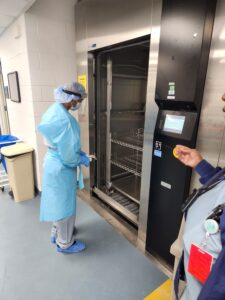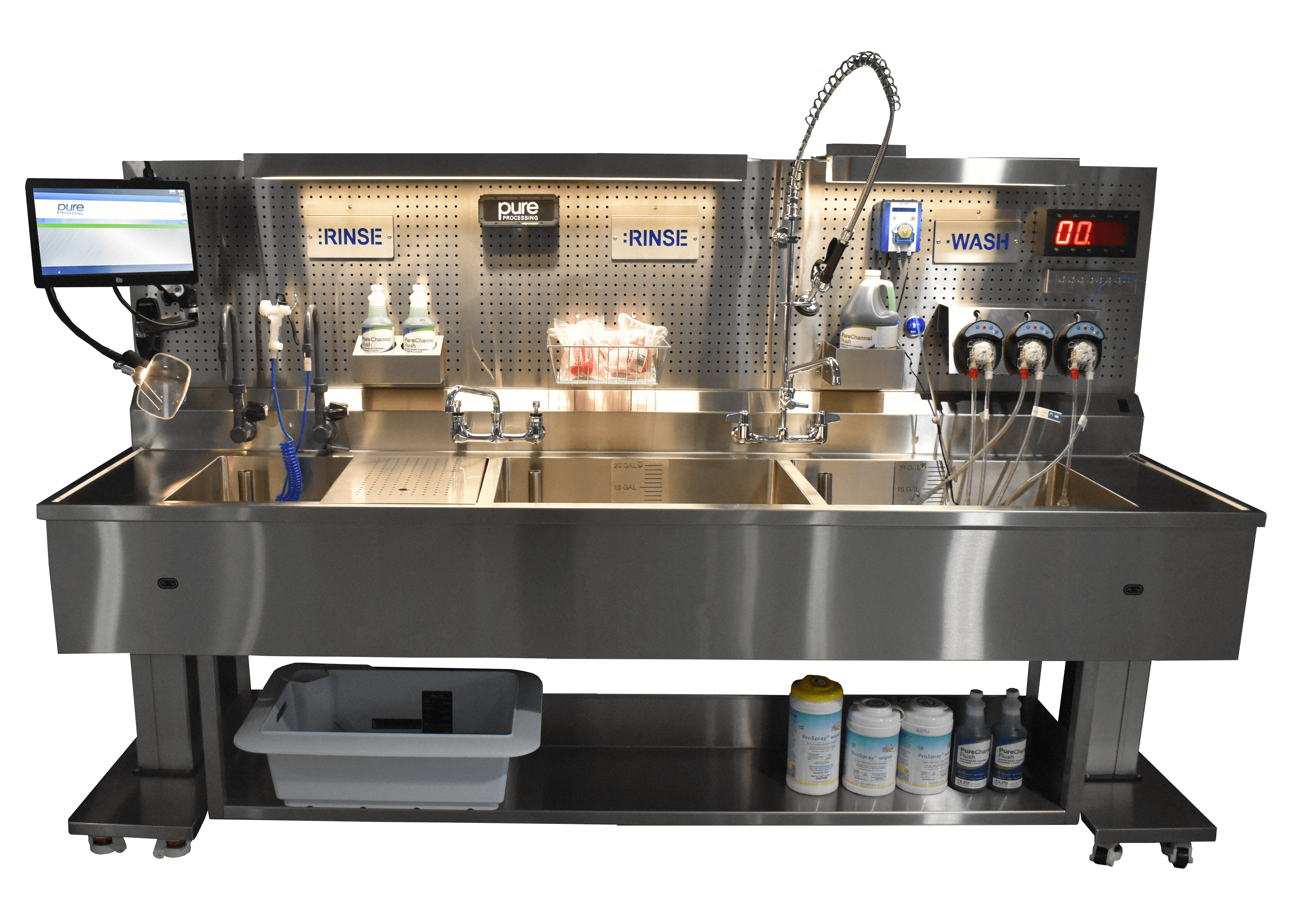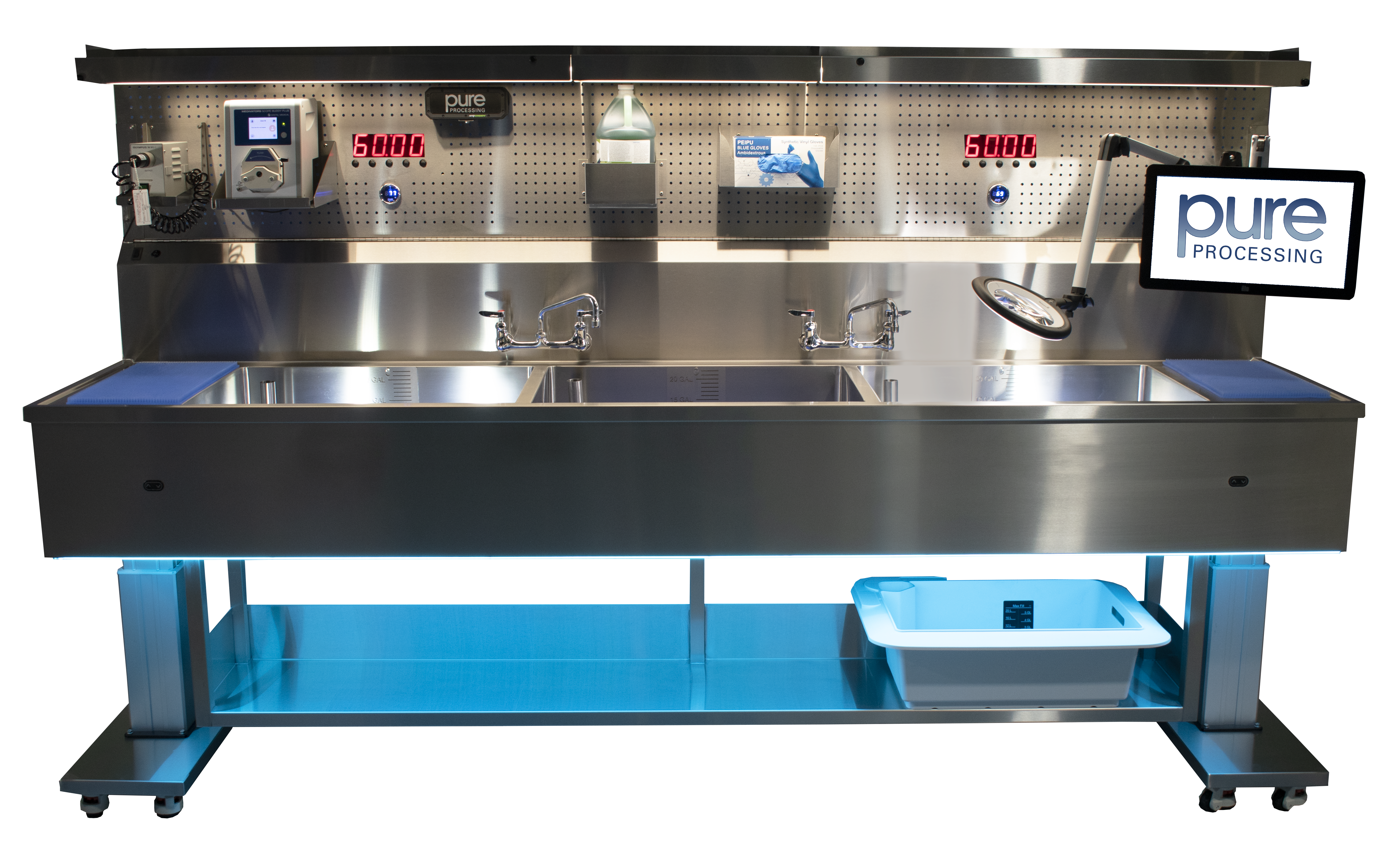
Departmental Problem Solving with Data
In March, our Voice of the Customer (VOC) Committee gathered to discuss a topic that can play a critical role in sterile processing departments but often gets overshadowed: Data. We partnered with Gene Ricupito, Senior Project Manager, Sterile Processing at UCSF Health to do a deep dive on solving problems using data.
Collecting data in your department is a great way to get insights into the trends and challenges occurring within it. The power of data, however, comes when you start acting on its findings and solving problems with it. What problems can managers solve using departmental data?
The Easiest Problems to Solve
Purchasing Decisions
Purchasing decisions are excellent to approach with data. One great example is packaging decisions and determining whether to purchase more containers or wrap.
Analyzing usage of containers, you can determine how quickly it will “pay” for itself. Every use reduces the cost per use based on your investment. Including this with data regarding wrap integrity concerns and number of incident reports, managers can begin forming a basis to go with one or another.
Taking it a step further, data tracking systems can indicate how often trays require transportation to and from various facilities. Containers provide better protection during transport, so if you know there will be frequent movement between facilities, containers might be the way to go.
Leveraging data on usage, incident reports, and frequency of transfer, sterile processing managers can figure out what packaging method makes the most sense to purchase more of.
Performance and Productivity
Tracking systems are great for delivering information on activities occurring throughout a facility and demonstrating productivity levels. Creating process points throughout a department enables managers to get visibility into elapsed times between activities,  ultimately providing a “data map” of throughput in the department.
ultimately providing a “data map” of throughput in the department.
Using data from these process points, managers can begin assessing what the root cause of the issue might be. Potential causes might include:
- Poor or insufficient equipment
- Lack of personnel
- Poorly utilized personnel
- Training
After exploring what the root cause of the slowdown or bottleneck might be, managers can be tinkering with ways to ultimately enhance throughput.
For instance, a process point in decontamination might signal that the two technicians being assigned there aren’t enough. A manager can try allocating a third more, and reviewing data after several shifts to see if throughput was increased. If it was, they now know that decontam needs a team of three to operate at the level the facility requires.
The Most Important Problems to Solve Using Data
Some problems must be approached in a data-driven way due to their complex nature.
Staff Justification
Managers must fine-tune their utilization of staff to meet departmental goals. However, even an optimally utilized team can only do so much. When it is determined that an additional technician is needed in decontamination, they’re being taken away from another portion of the department. Staff allocation is a zero-sum game: if you take someone from assembly and put them in decon, assembly is now down one person.
Using data collected through tracking systems and managed in scorecards, SPD managers can build a business case for additional staff. By analyzing their process points, throughput in various sections of the department, and output over time, a picture can be painted for decision makers that demonstrates moving someone from one area to another can solve one problem and create a second.
Objective data helps managers demonstrate that even when utilized at an optimal level, the number of people they have just isn’t enough to take care of the facility’s volume.
Equipment Justification
Capital equipment investment is a huge opportunity for any department; oftentimes a new piece of equipment can solve many problems that data is helping identify. As many SPD professionals know firsthand, getting new equipment is a rare chance, and SPD leadership often need to do a substantial amount of internal advocation to make it happen. That’s where data comes in.
In many instances, it’s easy to “know” that your department needs something, such as a sink, table, sterilizer, or washer, but getting approval for the purchase of one is exceedingly difficult. Data can provide the numerical basis for new equipment in a few ways but boils down to one fundamental concept: throughput must match volume.
Managers can use data from their tracking systems to identify where bottlenecks are forming and slowing down throughput. They can compare it to volume growth over time and demonstrate that investment in sterile processing has not matched volume growth. If you’ve had the same equipment for 20 years, and volume has grown 40% in that time, your department isn’t configured to meet the needs of the facility.
When To Leave Data Out of the Equation
Data and information collected from a department has a lot of uses and can help solve many problems, but there are some things that managers don’t need data to remedy.
Environment of Care
Creating an environment of care doesn’t require data, it requires thoughtfulness. Partnering with Infection Control and making regular rounds through your department can help proactively solve small problems before they become big and ensure the safety of your department. Some of these include:
- Looking for rust on equipment
- Ensuring dust isn’t accumulating in your department
- Spotting and repairing dents and holes in your walls
- Conducting maintenance on equipment
- Keeping up with compliance standards
Soft Skills
No amount of data will help managers when they need to manage. Interpersonal disputes between teammates require a tactful, human touch to help solve. Similarly, low morale can be spotted using data in the form of lower productivity, but it can’t be fixed using data. Showing appreciation for your team, advocating for them internally, and demonstrating you’re there to help them serve as ways to improve team morale. Then go look at productivity numbers!
What to Watch Out For
Using data to solve problems can help a manager transform their department, but it doesn’t come without its risks.
Get An Accurate Picture
Garbage in, garbage out. If inadequate processes and controls are in place to ensure that the data being collected is good, managers might find themselves in a tight spot. Using bad data to justify actions in the department can cause a slew of problems, for instance:
- Misallocation of technicians
- Making changes that hurt productivity
- Using inaccurate data when speaking with decision makers, hurting your credibility
The accuracy of your data can be a huge asset, but inaccuracy of your data can be a huge liability.
Get the Whole Picture
Having accurate data is great, but if you’re unable to determine its importance or how it relates to the big picture, it’s effectively meaningless. For example, if a department accurately logs all of its errors but doesn’t log total tray count, you don’t actually know your error rate, just your error count. Similarly, if only cases are measured, tray count will not be accurate.
Many metrics benefit from association or comparison with each other. Setting up processes and a scorecard that allows you to compare and contrast different pieces of information will give you the whole picture, and not just a sliver of it.
Conclusion
Data can be incredibly useful for a wide range of problem solving. From optimizing your department, to hiring that new employee you need, to updating your equipment to match volume and better support the needs of your facility. While not all problems can be solves with a data-driven approach, many important ones can be.
Interested in learning more about using data in your department? Check out the other posts in our Voice of the Customer blog series on data:
Studying Your Department: Where to Start and How to Gather Data
Don’t Let the Work Around Become the Workflow – Optimizing Your Department with Data
About: Voice of the Customer Committee
The Voice of the Customer Committee is a panel of healthcare and instrument reprocessing professionals who have graciously donated their time to share their expertise and guidance on current challenges faced by the instrument reprocessing community. Through sharing their insights, experiences, and best practices, we have been given the opportunity to share these findings with our readership. We’d like to thank our VOC members for their outstanding input and insights, as well as their time! Thank you for your continued partnership, and all you do.





